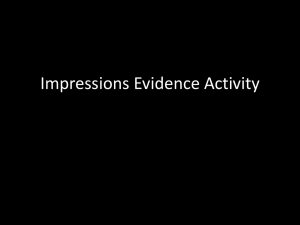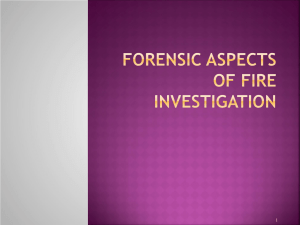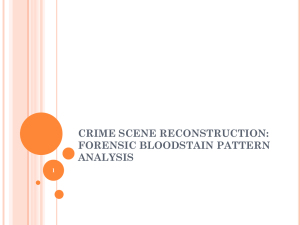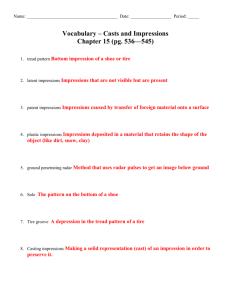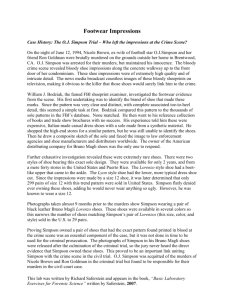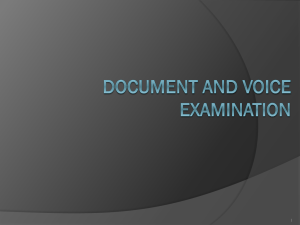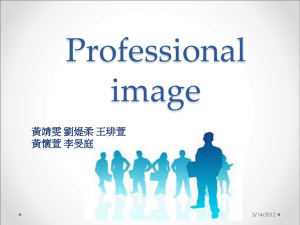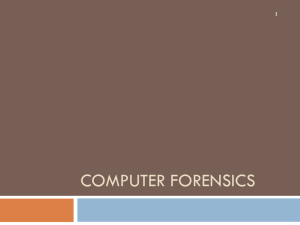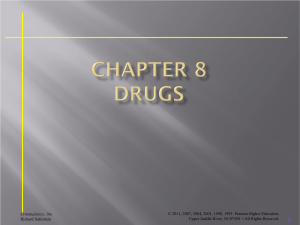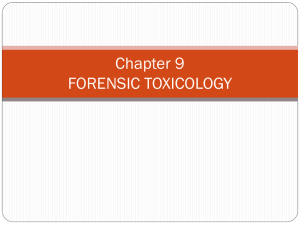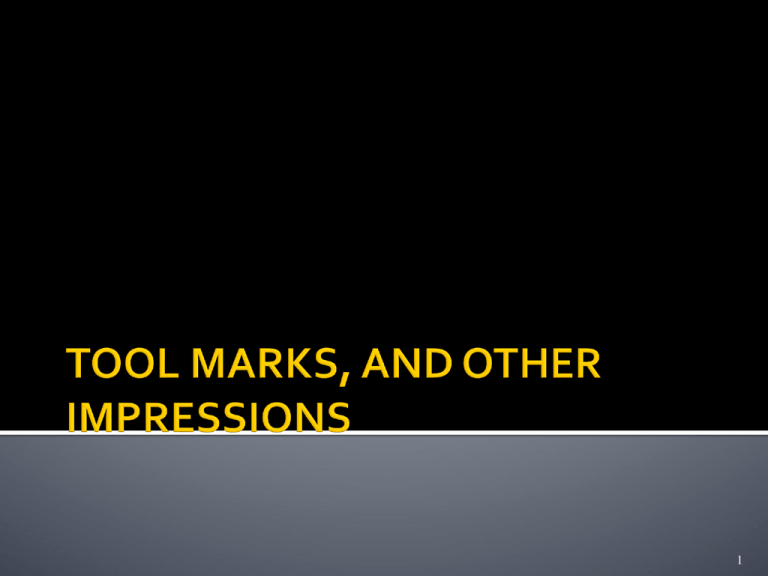
1
A tool mark is considered to be any impression,
cut, gouge, or abrasion caused by a tool coming
into contact with another object.
A careful examination of the impression can
reveal important class characteristics, such as
the size and shape of the tool.
But it is the presence of any minute
imperfections on a tool that imparts individuality
to that tool.
The shape and pattern of such imperfections are
further modified by damage and wear during the
life of the tool.
Criminalistics, 10e
Richard Saferstein
© 2011, 2007, 2004, 2001, 1998, 1995 Pearson Higher Education,
Upper Saddle River, NJ 07458. • All Rights Reserved.
2
17-
The comparison microscope is used to compare crimescene toolmarks with test impressions made with the
suspect tool.
When practical, the entire object or the part of the
object bearing the tool mark should be submitted to the
crime laboratory for examination.
Under no circumstances must the crime scene
investigator attempt to fit the suspect tool into the tool
mark.
Any contact between the tool and the marked surface
may alter the mark and will, at the least, raise serious
questions about the integrity of the evidence.
Criminalistics, 10e
Richard Saferstein
© 2011, 2007, 2004, 2001, 1998, 1995 Pearson Higher Education,
Upper Saddle River, NJ 07458. • All Rights Reserved.
3
17-
Impressions of other kinds, such as shoe, tire or
fabric impressions, may be important evidence.
Before any impression is moved or otherwise
handled, it must be photographed (including a
scale) to show all the observable details of the
impression.
If the impression is on a readily recoverable item,
such as glass, paper, or floor tile, the evidence is
transported intact to the laboratory.
If the surface cannot be submitted to the
laboratory, the investigator may be able to
preserve the print in a manner similar to lifting a
fingerprint.
Criminalistics, 10e
Richard Saferstein
© 2011, 2007, 2004, 2001, 1998, 1995 Pearson Higher Education,
Upper Saddle River, NJ 07458. • All Rights Reserved.
4
17-
When shoe and tire marks are impressed
into soft earth at a crime scene, their
preservation is best accomplished by
photography and casting.
In areas where a bloody footwear
impression is very faint or where the
subject has tracked through blood leaving
a trail of bloody impressions, chemical
enhancement can visualize latent or nearly
invisible blood impressions.
Criminalistics, 10e
Richard Saferstein
© 2011, 2007, 2004, 2001, 1998, 1995 Pearson Higher Education,
Upper Saddle River, NJ 07458. • All Rights Reserved.
5
17-
A sufficient number of points of comparison
or the uniqueness of such points will support
a finding that both the questioned and test
impressions originated from one and only
one source.
New computer software and web sites may
be able to assist in making shoe print and tire
impression comparisons.
Also, bite mark impressions on skin and
foodstuffs have proven to be important
evidence in a number of homicide and rape
cases.
Criminalistics, 10e
Richard Saferstein
© 2011, 2007, 2004, 2001, 1998, 1995 Pearson Higher Education,
Upper Saddle River, NJ 07458. • All Rights Reserved.
6
17-
Explain how a suspect tool is compared to a tool mark.
Name two types of marks that impart individuality to a tool and explain
how the marks are made.
Explain the forensic significance of class and individual characteristics to
the comparison of impressions.
What techniques does an investigator use to analyze tool marks that
cannot be removed from a crime scene? What is the disadvantage of this
technique?
List some common field reagents used to enhance bloody footprints.
What is the procedure used to create a shoe impression?
What is TreatMate? How is this used during CSI?
What is the first thing the investigator does before handling or moving
any impression at a crime scene? Why is this considered merely a backup
or precautionary procedure?
What kinds of impression evidence might a forensic odontologist be
© 2011, 2007, 2004, 2001, 1998, 1995 Pearson Higher Education,
Criminalistics, 10e
asked
a suspect?
Saddle River, NJ 07458. • All Rights Reserved.
Richard
Saferstein to analyze? How might this help identifyUpper
7
17-
Materials: shoe box partially filled with soil, a can of
aerosol hair spray with a lacquer base (spraying the
lacquer carefully over the impression will harden it)
and varying shoe styles & sizes.
Using the instructions from the book and class
notes; create 6-8 shoe impressions (Use different
shoe sizes and shoe types. Then chart the (class &
Individual) characteristics that would be identified
by a forensic scientists for each impression. Place
the impression chart in your CSI notebook.
Criminalistics, 10e
Richard Saferstein
© 2011, 2007, 2004, 2001, 1998, 1995 Pearson Higher Education,
Upper Saddle River, NJ 07458. • All Rights Reserved.
8
17-
Document (using photography) 6-8 tire mark
impressions from various locations in your school,
neighborhood or community. Then chart the (class
and/or Individual) characteristics that would be
identified by a forensic scientists for each
impression. Place the Tire Impression chart in your
CSI notebook.
Criminalistics, 10e
Richard Saferstein
© 2011, 2007, 2004, 2001, 1998, 1995 Pearson Higher Education,
Upper Saddle River, NJ 07458. • All Rights Reserved.
9
17-

